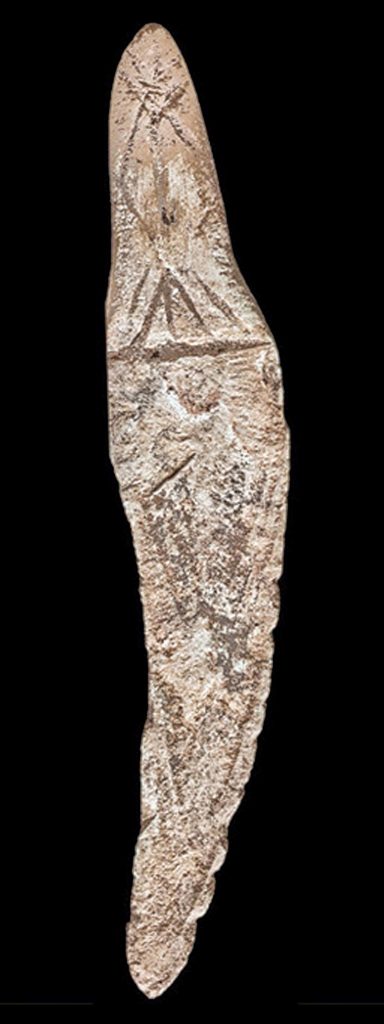Lips from GoogleTo understand prehistoric human concepts we have to try to think like them. A blade today is not the same as a blade in prehistoric times. Daggers made of stone have very rough edges, or labia, and may, with a little bit of imagination, resemble lips and labia. You can see a labial stone dagger below.
We at the etymology workshop were quite pleased to conclude that etymologically speaking cunnilingus and kissing are the same exercise except for two things:
1- One is performed vertically and the other horizontally;
2- The two tastes are distinguishable for those with sensitive buds.
We have already explained in two previous posts that prehistoric men and women didn’t create words by the bucketful. What they did was to create linguistic categories. Everything that could be eaten is “akal”, everything that could be drank is “m'”, everything that flies is “tr” with a dot under the “t”, everything that has a sharpish edge is *ŠF (Š=sh). Verbs, nouns, adjectives, past, future and present are later linguistic entrants. The single bilateral was used to express everything.
The “Semitic” word for lip is ‘shafa”, a suffixed specifier extension of the mono syllabic root morpheme *ŠF. Luckily for us men, we have a clever lady helping us to etymologize the true history of civilisation. It happens that she knows the physiology of her body better than us. Upon body scrutinization, she noticed the labia majora are called ‘shafr’ also a suffixed specifier extension of the same mono syllabic root morpheme *ŠF. The resemblance is obvious for most ladies except for those with surgical slits.
As we prepared to party at the discovery, a colleague decided to ruin it for us. He found that a blade also is called ‘shafr’, from the same damn root. When we asked friends and family members whether anyone has cut his lips performing cunnilingus the answer was a positive ‘no’.
Then we realised that our approach is not scientific enough. We were thinking of prehistoric times in terms of modern concepts.

To understand prehistoric human concepts we have to try to think like them. A blade today is not the same as a blade in prehistoric times. Daggers made of stone have very rough edges, or labia, and may, with a little bit of imagination, resemble lips and labia. You can see a labial stone dagger below.
Bishtawi is author of Origins of “Semitic” Languages, Origin of Arabic Numerals and Natural Foundations of Arabian Civilisation
Image: A prehistoric stone dagger found in “Al Mager”, a prehistoric settlement in south west Arabia. Artefacts found there are dated 7,000 from current era with arrow tips some 50,000 years old.

One os several hundred tools and artefacts found at Magar ancient site in Saudi Arabia
Last modified: December 30, 2022



